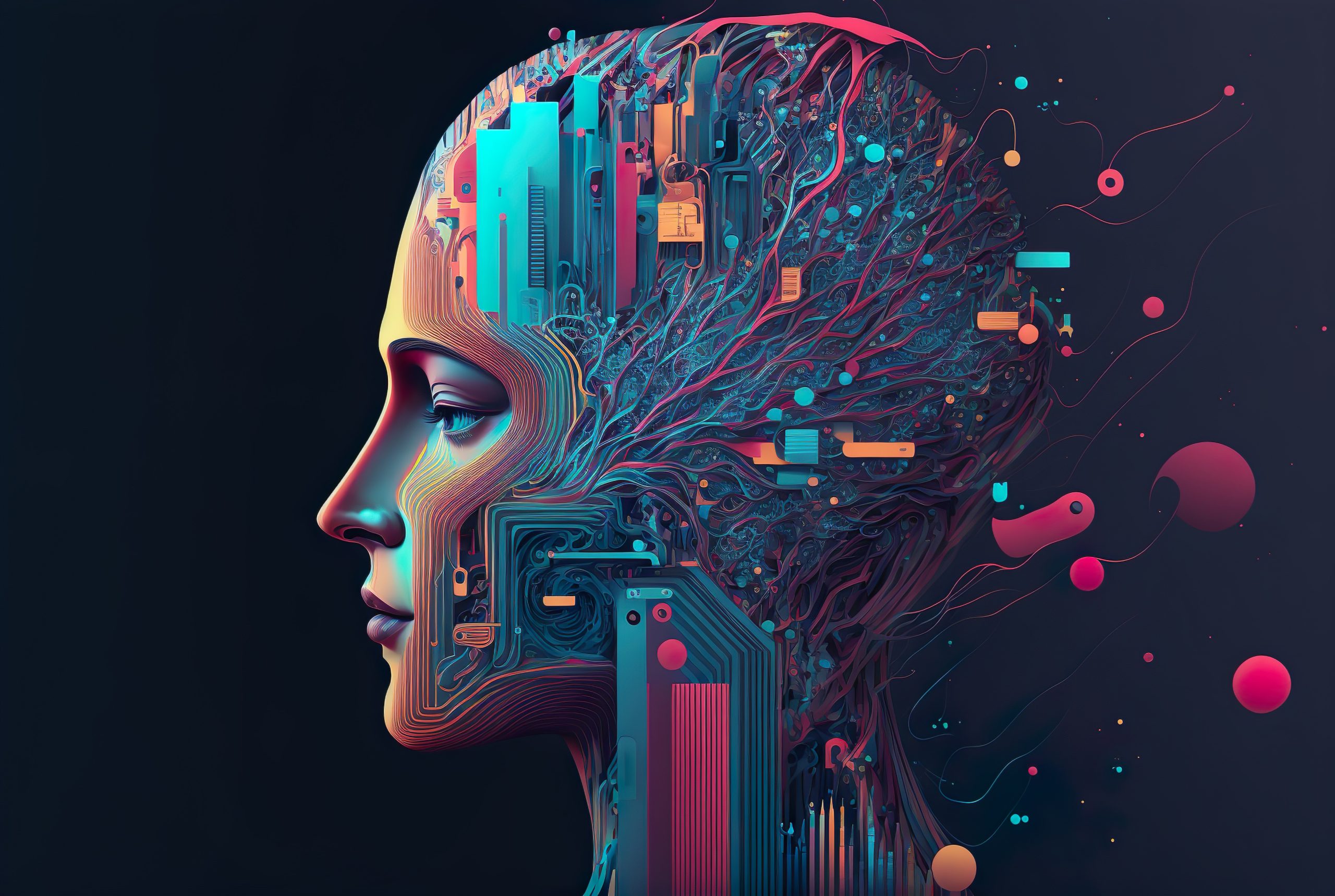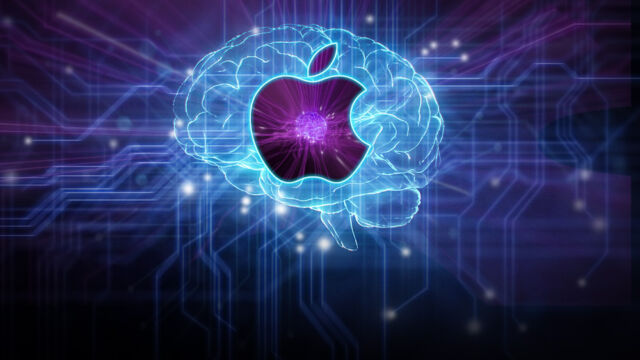Highlights
- Apple in talks with Condé Nast, NBC News, and IAC for news content licensing.
- Estimated $50 million deal for training Apple’s AI model.
- Mixed reactions from news publishers over potential legal implications.
- Recent AI research by Apple includes ‘HUGS’ technique and efficient language model inference.
Apple, a tech titan not previously at the forefront of the AI race, is now making strategic moves to delve deeper into the realm of artificial intelligence.
According to The New York Times, Apple is in talks with major news publishers, including Condé Nast, NBC News, and IAC, about licensing their extensive news archives.
But why you would ask?
The current most popular generative AI system ChatGPT, has a tendency to hallucinate facts and information when it is asked some specific questions.
Apple doesn’t want this to happen to its own in-development GPT model.
The deal, to train its model on articles by these news publishers, is not cheap and is reportedly worth at least $50 million over several years.
Apple, which has been spending millions daily on AI research, recently released a machine learning framework optimized for Apple Silicon.
This development aims to enhance the performance of large language models (LLMs) on Apple devices, which are likely to lead to broadscale benefits including an improved Siri.
Publishers’ Mixed Responses

As expected, Apple’s decision hasn’t gone smoothly as the response from the involved news organizations is varied.
Some executives appear optimistic about the potential collaboration with Apple.
However, there is a palpable sense of apprehension due to concerns about legal liabilities associated with Apple’s use of its content.
Apple’s alleged vagueness regarding its long-term AI and news strategy isn’t helping matters.
Publishers might be cautious due to the potential legal implications of their content being used in AI training.
The fear of inadvertently opening themselves up to legal challenges looms large, especially given the evolving landscape of AI ethics and regulations.
Pursuit of Reliable AI

Apple’s strategy mirrors the efforts of other AI like OpenAI.
The latter has previously engaged with the Associated Press and Axel Springer for similar purposes although to a varying degree.
Google, too, is working on AI tools to assist journalists as per reports.
These collaborations appear to be necessary for the growing trend where AI and journalism intersect.
It remains to be seen how well the publishers of news articles take this development.
Apple’s AI Research Papers

More recently, Apple has made significant strides in AI with two innovative research papers. The first introduces the ‘HUGS’ (Human Gaussian Splats) technique, revolutionizing the creation of animated 3D avatars.
Unlike traditional methods that required complex multi-camera setups, HUGS simplifies this process.
Using just a monocular video, it generates detailed 3D avatars, capturing nuanced features such as clothing and hair texture.
The second paper focuses on efficient language model inference, crucial for enhancing the Apple GPT iPhone’s ability to run advanced AI systems.
This development indicates a future where powerful AI technologies, similar to ChatGPT, are not confined to high-end servers but are readily available in the palm of your hand.
This transition marks a significant leap in making AI more accessible and integrated into everyday technology.
FAQs
What is the purpose behind Apple’s negotiations with news publishers?
Apple is reportedly discussing licensing agreements with major news publishers like Condé Nast and NBC News.
The goal is to use their extensive news archives for training Apple’s in-development AI model, ensuring the accuracy and reliability of the information processed by its AI systems.
What are the financial details of Apple’s proposed deal with news publishers?
The deal between Apple and the news publishers is said to be valued at least $50 million over several years.
This investment is part of Apple’s broader initiative to enhance its AI capabilities, including developing large language models (LLMs) optimized for Apple Silicon.
How have publishers responded to Apple’s AI initiative?
Responses from news organizations to Apple’s proposal have been mixed. Some executives are optimistic about the collaboration, while others express concern over legal liabilities and Apple’s long-term AI and news strategy.
The apprehension stems from potential legal challenges related to the use of their content in AI training.
What recent advancements has Apple made in AI research?
Apple has made significant strides in AI research, most notably with two innovative papers. The ‘HUGS’ technique simplifies creating animated 3D avatars from monocular videos, and a new framework focuses on efficient language model inference.
These advancements suggest a future where powerful AI like ChatGPT could be accessible on Apple devices.
What is Apple’s HUGS technology and how does it impact AI development?
Apple’s HUGS (Human Gaussian Splats) technology is a novel method for creating 3D avatars using monocular videos.
This advancement simplifies the process of generating realistic 3D models, traditionally requiring complex multi-camera setups.
HUGS is set to boost the functionality of Apple GPT in devices like iPhones, with potential applications like virtual clothes fitting.
How does the efficient language model inference paper contribute to Apple GPT?
The second research paper on efficient language model inference is crucial for enhancing the Apple GPT on devices like the iPhone.
It indicates a future where advanced AI systems, similar to ChatGPT, can operate smoothly on everyday devices.
What are the potential applications of Apple GPT and HUGS in Apple products?
Beyond theoretical advancements, Apple’s GPT and HUGS technologies have practical applications in products like Vision Pro, enhancing user experiences with immersive visual features.
The integration of these technologies could significantly change how users interact with Apple devices.
What are the two key techniques of storing AI on Flash Memory ?
In a new research paper titled “LLM in a flash: Efficient Large Language Model Inference with Limited Memory,” the authors note that flash storage is more abundant in mobile devices than the RAM traditionally used for running LLMs.
Their method cleverly bypasses the limitation using two key techniques that minimize data transfer and maximize flash memory throughput:
Windowing: Think of this as a recycling method. Instead of loading new data every time, the AI model reuses some of the data it already processed.
This reduces the need for constant memory fetching, making the process faster and smoother.
Row-Column Bundling: This technique is like reading a book in larger chunks instead of one word at a time. By grouping data more efficiently, it can be read faster from the flash memory, speeding up the AI’s ability to understand and generate language.
The combination of these methods allows AI models to run up to twice the size of the iPhone’s available memory, according to the paper.
This translates to a 4-5 times increase in speed on standard processors (CPUs) and an impressive 20-25 times faster on graphics processors (GPUs).
“This breakthrough is particularly crucial for deploying advanced LLMs in resource-limited environments, thereby expanding their applicability and accessibility,” write the authors.
How is AI faster on iPhone?
The breakthrough in AI efficiency opens new possibilities for future iPhones, such as more advanced Siri capabilities, real-time language translation, and sophisticated AI-driven features in photography and augmented reality.
The technology also sets the stage for iPhones to run complex AI assistants and chatbots on-device, something Apple is already said to be working on.
Apple’s work on generative AI could eventually be incorporated into its Siri voice assistant.
Apple in February 2023 held an AI summit and briefed employees on its large language model work. According to Bloomberg, Apple is aiming for a smarter version of Siri that’s deeply integrated with AI.
Apple is planning to update the way that Siri interacts with the Messages app, allowing users to field complex questions and auto-complete sentences more effectively.
Beyond that, Apple is rumored to be planning to add AI to as many Apple apps as possible.
What is Apple GPT?
Apple is reportedly developing its own generative AI model called “Ajax”. Designed to rival the likes of OpenAI’s GPT-3 and GPT-4, Ajax operates on 200 billion parameters, suggesting a high level of complexity and capability in language understanding and generation.
Internally known as “Apple GPT,” Ajax aims to unify machine learning development across Apple, suggesting a broader strategy to integrate AI more deeply into Apple’s ecosystem.
Apple GPT
Apple is reportedly developing its own generative AI model called “Ajax”.
Designed to rival the likes of OpenAI’s GPT-3 and GPT-4, Ajax operates on 200 billion parameters, suggesting a high level of complexity and capability in language understanding and generation.
Internally known as “Apple GPT,” Ajax aims to unify machine learning development across Apple, suggesting a broader strategy to integrate AI more deeply into Apple’s ecosystem.
What is the Future of AI on Apple Devices?
As per recent reports, Apple plans to launch generative AI features on the iPhone and iPad by late 2024, aligning with the release of iOS 18.
The company is building a robust infrastructure with AI servers to support a blend of cloud-based and on-device AI processing.
Also Read: Apple’s M3 iMac Teardown Reveals Subtle Changes and High-End Features
Also Read: Apple GPT Breakthrough: Researchers Set to Bring Generative AI to iPhones
Also Read: Apple’s 2024 Lineup to Feature A Bigger iPad Air, OLED iPad Pro Models, and M3 MacBook Air
